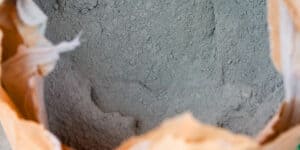What happens if you just don’t do anything to protect your concrete structure? It succumbs to Destruction by Neglect! The team talks about aggressive environments for concrete, the reason behind the challenge, and options for improving the situation. With a side serve of Reinholdt de Sitter’s “Law of Fives”!
Destruction by Neglect

Invisible Strength
Destruction by Neglect
/
RSS Feed
Destruction by Neglect
View the Transcript
LOUISE: Well hello all, and welcome to Markham’s latest podcast episode! I’m Louise Kirk, part of the Markham marketing team in Australia, and it’s great to have you listening today.
Continuing our Invisible Strength series, we’re diving into a hot topic – Destruction by Neglect. Along the way, we’ll talk about environments that are particularly challenging for concrete.
With us virtually today is Martin Prestidge, Sales and Marketing Manager of our Industry and Infrastructure Department. Martin joins us from the Markham headquarters in Napier, NZ. Martin, welcome aboard. Please introduce yourself to the audience!
MARTIN: Thank you, Louise! Yes, I’m Martin Prestidge, been with the company for over 10 years now. Yes, as you said, working in the industry and infrastructure sector, so dealing with asset owners, civil consultants, engineers and construction companies – Working mainly on increasing the service life of concrete structures, whether it’s in the new construction phase or remediation projects. I’ve been involved in the marine sector predominantly and then more latterly across the mining and other civil projects. Thanks, Louise.
LOUISE: Great, thanks, Martin! And working with Martin is Doug Hamlin, our Research and Development expert. Doug, tell the audience about yourself.
DOUG: Yes, thanks, Louise. Yes, I’m Doug Hamlin, worked with Markham for just over 10 years. Likewise with Martin work in the infrastructure space here at Markham. So working with civil engineers and asset owners, looking at both new and existing projects, how we can extend service life.
I also look after the research and development and technical side as well, so some good experience between the two of us, I guess you could say! So back to you, Louise.
LOUISE: Yes, absolutely. Thanks, Doug.
So I thought we could lead into the topic by talking about environments that are challenging to concrete. Martin, what would you say is the most challenging place for concrete survival?
MARTIN: Yes, thanks, Louise. Interesting question! The most challenging … obviously you’ve got the one that everybody knows about, being marine environments, with concrete with chloride attack.
But there’s a lot of other areas where concrete’s under continuing attacks just by airborne contamination or, in their daily use, whether it’s storing fertilizers or other chemicals; wastewater treatment plants, and even just the town supply, whether that’s under sulphide attacks, softwater attack. Any sort of contaminants can become soluble and be carried into the concrete.
As far as the most aggressive – it really depends on how much time was put into, and how well they were constructed at the start, how well they’ve been able to deliver on their service life aims.
Then again, it’s really how often they are in the wetting and drying cycle as well. So it’s a lot of challenges for concrete out there in the general marketplace.
As far as the most aggressive environment for concrete, it’s a little bit hard to answer in the absolute. There’s a lot of environments that are detrimental to concrete. The one common link is that the contaminants are all moisture-borne, soluble, carried into the concrete, and increase the rate of corrosion – just by being able to ingress, inside the concrete. So not sure if that answers your question, Louise?
LOUISE: That’s great, Martin! Did I understand you correctly, that all concrete contamination is carried by water, by moisture?
MARTIN: Yes, so all concrete contaminants that have ingressed, that are carried in by moisture – I guess that’s not an absolute statement, that’s a common one. You do get the attack from CO2, that sort of thing. But as a rule, if it can be soluble in water, it gets carried in through the capillaries, the vein, the network system of the concrete, carried deep in, until it reaches the reinforcing steel and accelerates the corrosion process.
You got some comments on that, Doug?
DOUG: That’s good. I fully agree with what you’re saying there. There are other things as well like carbonation attacks on concrete. So that’s when carbon dioxide in the air mixes with moisture and forms an acid, which starts breaking down the concrete. Yes, there are so many things – even things like ASR and DEF damage mechanisms. They all need moisture to feed these reactions and break the concrete down.
So I guess what the main, I mean what a good focus would be, is to look at protecting these structures right early on in the structures life. So even going right back to design, whether you can include an admixture into the design as, you know, for a little bit of extra cost upfront. But you know that the benefits of protecting that, or stopping that moisture, getting in and carrying the contaminants, right from day one – it gives a structure its best chance.
That’s not to be said it can’t be done, you know, later on as well. A lot of structures we see when they start showing initial signs of corrosion. But you know, even if you could treat the structure within three to four years of it being built, is still similar benefits to, you know, having something right at the construction stage – if that makes sense.
LOUISE: Yes, I think it does. So Doug, to take no action and give the concrete no protection is really to condemn the structure to Destruction by Neglect?
DOUG: Correct, yes, that’s a good way to put it. So you know the old saying of “A stitch in time saves nine” – that can relate to concrete structures – it does very much so, you know. So taking a little bit of extra care to stop that moisture moving through the concrete, stop it carrying contaminants in those early stages of the structure’s life is, you know, it is saving a …
Actually, Martin, we were talking about the other day, the “Law of Fives”, which’s related to concrete remediation repair, do you want to run over that?
MARTIN: Yes for sure, yes. So the “Law of Fives” – pretty much, spend a dollar for protection or prevention at the construction phase, can save you up to $125 in the remediation phase. That’s broken down: So if you spent a dollar during construction, that could save you, say $5 when the issues first become apparent and repair system then, or $25 once they’ve progressed and more extensive works required, up to major remediation, you’re looking around $125. So $1 to save $125.
What we’ve noticed, working in the field is, in the engineers’ best practices, it’s no slight on the engineers, but they’ll build something to a design code to get the service life required. And what we’ve seen is, this design – the durability code that they’re designing too doesn’t always translate nicely to the outside world, into the field. So if you’ve got a structure, or they’re pouring concrete in very harsh conditions – whether it’s in northern WA where it’s extreme heat, that sort of thing – or they’re using a certain amount of, say microsilica to get the, meet the durability code, that doesn’t give a nice mix, you end up with a lot of plastic shrinkage cracking, that sort of thing.
So while they’ve met the code, done everything right, it’s not always delivering a durable structure from day one. Whereas if you go slightly over and above, and spend that extra dollar, is what we’re preaching. Spend the dollar in construction. So you meet the code, but you also put in an admixture, or cure it with a penetrating hydrogel, and that’ll save you up to $125 down the track in the remediation phase. Was that it?
DOUG: Yes, that’s good. Yes, I guess that that really underlines that concrete deterioration is by no means a linear or a gradual function, it is exponential and it really accelerates as you can see. That dollar, five dollars, 25, then 125, that’s obviously if the structures left with no action taken. So yes, that’s really why we encourage that protective treatment right at the construction stage, so right from the design documents. Well, even in those most first few years of structures life.
Obviously, if your structure has degraded to the point that it’s needing repairs, it’s still a good option to put a protection treatment on, like the colloidal silica hydrogels, because you’re really wanting to keep that structure in that condition, you know, in that repair condition. You don’t want to have it carrying on degrading.
And yes, I really like what you said there about the engineering codes or the standards there, that it’s, you know, they are a good guide and, you know, give sort of minimum requirements there, but as you say, there are some challenges in the field with placing some of those, you know, high durability concretes. And you know, it always pays to go that extra step, put some waterproofing, put some protection in the mix as well. It’s really like insurance, I guess you could say.
So back to you, Louise. That’s enough from me for now!
LOUISE: Yes, that’s very interesting, Doug. Tell us about those treatments. What do you recommend?
DOUG: Yeah, sure. So we’ve touched on the colloidal silica hydrogels; so these are a nano-silica technology; and in essence, they react with the alkalis in the concrete and form a hydrogel, and stop that moisture movement through the concrete. Now, these can be included as an admixture in the concrete, right from the very start. Or they can be spray applied to the concrete at a later date. Now once this hydrogel that I mentioned is set up, it prevents those internal moisture movements and protects, prevents those contaminants from getting through the concrete and causing that degradation. So if that makes sense there …
MARTIN: Yes, thanks, Doug. So what you’re saying is, you can put on a hydrogel treatment at any stage, any age structure, and so that’s whether that’s 80 or 90 years old. Is that right?
DOUG: That’s correct, yeah. So there’s always going to be enough calcium hydroxide and alkalis in the concrete for our treatment to react with, and reduce the permeability of the structure and reduce that, you know, the amount of contaminants that can get in – and therefore pushing out the service life.
MARTIN: What sort of preparation? And what sort of visual impact do these treatments have on the structure?
DOUG: So yes, it’s a good point. Basically, we need access to bare concrete – we’re talking an existing structure – any, you know, graffiti, or existing epoxy coatings, that type of thing, needs to be removed. Then, you know, water-blasted down clean, and then we spray apply them. Apart from that, because it’s a penetrating treatment, it is a very fast, fast application, so that once you get back to a clean surface, that’s just wet-on-wet coats, and it’s, you know, minimal downtime.
MARTIN: Yeah, that’s perfect. I think the other benefit of colloidal silica hydrogel is, the environmental impact is very low as well, so there’s very little need to catch and contain. You can do it in high traffic areas. You can open up the traffic very quickly. Do it over water bodies, that sort of thing. Marine structures – it can go into the sea without having too many issues.
DOUG: And all the way through that, all these problems that are getting solved or, you know, protected against, it all comes down to the fact that the moisture has been controlled in the structure. So Louise back to you.
LOUISE: Yeah, thank you, Doug. Just sounds like such a very simple approach. Immobilise the moisture. That’s all there is to do?
DOUG: It is, it is really that simple. I guess you could say it’s concrete’s biggest flaw in terms of damage. Of course, every project is slightly different. Need to assess it on its own merits. There might be a combination of repair procedures are needed if the deterioration has progressed too far. On the other side, if it is a real aggressive environment, you might need to have two or three, more than one line of defence there. But the key is to get in early, early on in the structure. It’s the most cost-effective and efficient way to do it. Like you’ve said, the destruction by neglect. We don’t want to condemn our structures to this, so I think it’s a good way to put it.
LOUISE: Yeah, that’s excellent advice.
Well, thank you so much. Martin and Doug for joining us today. And to all our listeners, we welcome any questions or feedback that you have on today’s topic or even if you have a specific project you’d like to talk about.
If you want to find out more, please go to our website www.markhamglobal.com. We do our best to respond to all inquiries within a business day.
We are also happy to take suggestions for topics in the future. What are your concrete pain points in the field? How can we help to educate the industry? Thank you so much for listening and don’t miss our next episodes!
Want to Contribute?
Feedback on our podcasts? Suggestions for future topics? Looking for more information on topics we’ve discussed? Send us a message – we’ll be in touch within a day or two.
More about MARKHAM
MARKHAM are dedicated to providing innovations for concrete and construction. Focusing on concrete waterproofing solutions, penetrating concrete sealers and durability treatments for concrete.
Podcast Categories
Latest Episodes

The Electric Vehicle of Cement Making
We’ve talked about this in other places, but cement manufacturing is a real problem child

Starting Good Conversations
Have you seen those colourful Trademutt shirts on site? They’re a conversation starter! This is

Lessons in Infrastructure Remediation
In this very practical segment, Mike shares pointers from his past experience in infrastructure remediation.
invisible strength podcast
The whole MARKHAM team is pleased to present you with our podcast series, INVISIBLE STRENGTH. In this series of interviews, we’ll walk through the science and challenges of concrete durability, what goes wrong in the field – and the advanced methods available to restore and enhance service life to concrete construction.
INVISIBLE STRENGTH reflects a number of factors in concrete construction and durability. When things go wrong, the evidence can become very visible indeed. However, when all is going well, there’s nothing particular to be seen!
MARKHAM’s concrete treatments, too, are invisible once completed – and the result is the long internal, invisible durability of the concrete.
So join us as we explore the unseen world inside concrete – why it matters, and how it can be protected!
Stay Connected
Listen and subscribe to us on your favourite podcast platform, we're always adding new episodes!
Invisible Strength – The media site for MARKHAM – Adding Life to Concrete.
At MARKHAM, we’re on a mission to transform concrete and construction. Our Purpose? ADDING LIFE TO CONCRETE.
From innovative waterproofing solutions to penetrating hardeners and sealers, our focus is clear: to reinforce concrete structures and make them withstand the test of time.
Newsletter
Sign up for email updates on the latest collections, campaigns and videos.


